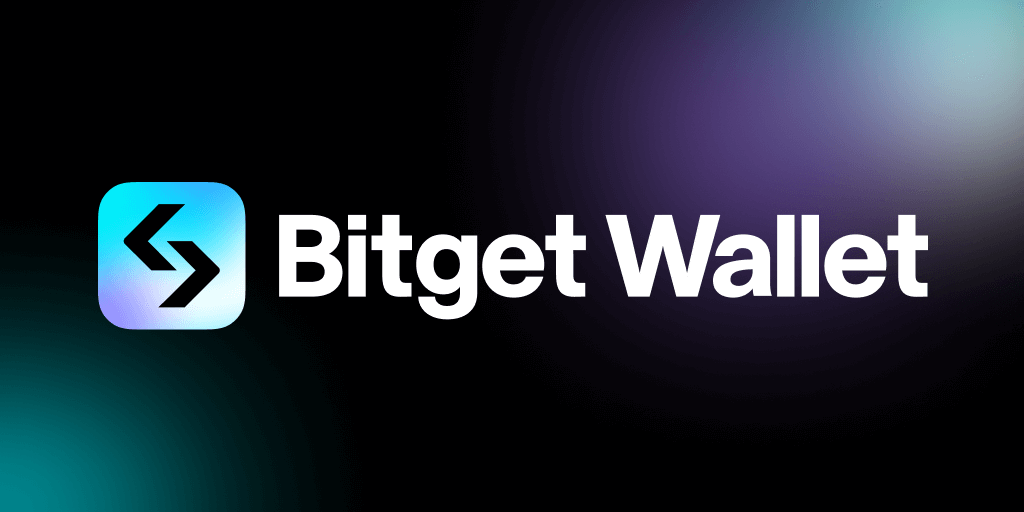Legalität von Echtgeld-Online-Casinos in verschiedenen deutschen Bundesländern
Bundeslandspezifische Gesetzeslage und rechtliche Rahmenbedingungen
Unterschiede im Glücksspielrecht zwischen den Bundesländern
In Deutschland ist das Glücksspielrecht stark föderal geregelt, was bedeutet, dass jedes Bundesland eigene Regelungen und Interpretationen zum Thema Online-Glücksspiel hat. Während das Bundesgesetz den Rahmen vorgibt, sind die konkreten Umsetzungen und Durchsetzungen oft regional unterschiedlich. So unterscheiden sich beispielsweise die Anforderungen an Lizenzierung, Werbung und Spielerschutzmaßnahmen erheblich zwischen den Bundesländern.
Ein Beispiel hierfür ist Bayern, das traditionell eine restriktivere Haltung gegenüber Online-Glücksspielen eingenommen hat. Hier gelten strengere Vorschriften, die die Zulassung und den Betrieb illegaler Anbieter erschweren. Im Gegensatz dazu haben Bundesländer wie Schleswig-Holstein, die bereits früher spezielle Regelungen für Online-Glücksspiel eingeführt haben, ein günstigeres Umfeld für legale Anbieter geschaffen.
Diese Unterschiede beeinflussen maßgeblich, ob und wann Online-Casinos in einem Bundesland legal operieren können. Das führt dazu, dass Nutzer in manchen Regionen Zugang zu lizenzierten Angeboten haben, während in anderen Bundesländern das Angebot kaum reguliert oder gar illegal ist.
Einfluss regionaler Gesetzgeber auf die Legalisierung von Online-Casinos
Der Einfluss der Landesgesetzgeber auf die Legalisierung erstreckt sich auf die Erarbeitung spezifischer Regelungen, die auf die bundesweiten Vorgaben aufbauen. Manche Bundesländer setzen aktiv Anreize für legale Anbieter, beispielsweise durch die Einrichtung eigener Lizenzvergabeverfahren, während andere eher restriktiv vorgehen.
Ein Beispiel ist Schleswig-Holstein, das bereits 2012 ein eigenes Glücksspielgesetz verabschiedete und somit eine der ersten Regionen war, die eine eigenständige Lizenzierungsplattform für Online-Glücksspielanbieter etablierte. Diese Initiative hat dazu beigetragen, den Markt zu regulieren und illegale Angebote zu reduzieren.
Andere Bundesländer wie Niedersachsen oder Nordrhein-Westfalen prüfen derzeit neue Gesetzesinitiativen, die die Legalisierung von Online-Casinos weiter vorantreiben könnten. Diese Entwicklungen sind maßgeblich für die zukünftige Marktdynamik und die Verfügbarkeit legaler Angebote in den jeweiligen Regionen.
Relevanz der Landesgesetze für Anbieter und Spieler
Für Anbieter bedeutet die regionale Gesetzeslage, dass sie ihre Geschäftsmodelle genau an die jeweiligen Landesvorschriften anpassen müssen. Die Einhaltung der Landesgesetze ist Voraussetzung für den legalen Betrieb, was Lizenzierung, Spielerschutz und Steuerpflichten umfasst. Ein Anbieter, der in einem Bundesland ohne klare Lizenzierung operiert, riskiert rechtliche Konsequenzen und den Ausschluss vom Markt.
Spieler profitieren hingegen von der Landesgesetzgebung durch den Schutz vor Betrug, die Gewährleistung fairer Spiele und den Zugang zu sicheren Zahlungsdiensten. In Bundesländern mit etablierten Regulierungssystemen können Nutzer sicher sein, dass ihre Daten und Einzahlungen geschützt sind und im Falle von Streitigkeiten rechtliche Unterstützung besteht.
Zusammenfassend lässt sich sagen, dass die Landesgesetze direkt beeinflussen, ob Online-Casinos in einer Region legal sind, und somit sowohl für die Anbieter als auch für die Spieler von zentraler Bedeutung sind.
Aktuelle Entwicklungen und Trends in der Legalisierungspraxis
Neue Gesetzgebungsverfahren und politische Initiativen
Seit 2023 sind in Deutschland mehrere gesetzgeberische Initiativen im Gange, die die Legalisierung von Online-Casinos weiter vorantreiben sollen. Das wichtigste ist das geplante Glücksspielneuregulierungsstaatsvertrag (GlüNeuRStV), das bundesweit einheitliche Rahmenbedingungen schaffen soll. Ziel ist es, den Markt zu regulieren, illegalen Angeboten den Boden zu entziehen und Verbraucherschutz zu verbessern.
Einige Bundesländer, wie Hessen und Berlin, setzen auf Pilotprojekte, um die Wirksamkeit der neuen Regelungen zu testen. Diese Initiativen führen zu einer stärkeren Harmonisierung der rechtlichen Landschaft und könnten in Zukunft dazu führen, dass Online-Casinos in allen Bundesländern legal betrieben werden können.
Die politische Debatte ist geprägt von Interessen verschiedener Stakeholder, darunter staatliche Behörden, private Anbieter und Verbraucherschutzorganisationen. Die Richtung der Gesetzgebung beeinflusst maßgeblich die Marktöffnung und die Verfügbarkeit legaler Angebote.
Auswirkungen der rechtlichen Änderungen auf die Marktöffnung
Rechtliche Neuerungen haben unmittelbare Auswirkungen auf die Marktstrukturen. Mit der Einführung bundesweit einheitlicher Lizenzvergaben steigt die Zahl der legalen Anbieter, was zu mehr Wettbewerb und besseren Angeboten führt. Zudem werden Spielerschutzmaßnahmen verschärft, was das Vertrauen der Nutzer erhöht.
Beispielsweise führte die Lizenzvergabe durch die neue Glücksspielbehörde in Sachsen-Anhalt dazu, dass mehrere Anbieter ihre Angebote legalisieren konnten. Diese Entwicklung zeigt, dass rechtliche Änderungen direkt die Verfügbarkeit und Qualität der Online-Casino-Angebote beeinflussen.
Gleichzeitig besteht die Herausforderung, die bestehende Schattenwirtschaft zu reduzieren. Anbieter, die sich nicht an die neuen Regeln halten, riskieren Sanktionen oder den Ausschluss vom Markt, was den Legalitätsgrad insgesamt erhöht.
Fallbeispiele erfolgreicher Legalisierungsmodelle in einzelnen Bundesländern
| Bundesland | Legalisierungsmodell | Ergebnisse |
|---|---|---|
| Schleswig-Holstein | Eigenständige Lizenzierung seit 2012, strenge Auflagen | Reduktion illegaler Angebote, stabile Marktteilnahme lizenzierter Anbieter |
| Nordrhein-Westfalen | Kooperation mit Bundesländern im Rahmen des GlüNeuRStV | Vorbereitung auf bundesweite Regulierung, steigende Zahl legaler Anbieter |
| Sachsen-Anhalt | Neue Landeslizenz seit 2022, Fokus auf Verbraucherschutz | Verbesserter Spielerschutz, mehr Transparenz im Markt |
Praktische Konsequenzen für Betreiber und Nutzer
Voraussetzungen für die legale Betreibung von Online-Casinos
Betreiber müssen eine gültige Lizenz der jeweiligen Landesbehörde vorweisen, um legal aktiv zu sein. Diese erfordert umfangreiche Nachweise zu finanzieller Stabilität, Spielerschutzprogrammen und technischen Sicherheitsstandards. Zudem müssen sie regelmäßige Berichte über ihre Geschäftstätigkeiten abgeben und bestimmte Werbungseinschränkungen beachten.
Für deutsche Nutzer bedeutet dies, dass sie nur bei lizenzierten Anbietern spielen sollten, um legalen Schutz zu genießen. Viele legale Anbieter bieten zudem regionale Anpassungen, um den spezifischen gesetzlichen Vorgaben zu entsprechen.
Beispielsweise verlangt die Lizenz in Schleswig-Holstein die Implementierung eines Selbstsperrsystems für problematisches Spielverhalten sowie klare Auszahlungsmodalitäten, um Spielerschutz zu gewährleisten.
Risiken bei illegalen Angeboten in unterschiedlichen Regionen
Illegale Online-Casinos operieren oft ohne ausreichenden Verbraucherschutz, was zu finanziellen Verlusten, Datenschutzverletzungen oder Betrug führen kann. Nutzer, die auf nicht lizenzierten Plattformen spielen, sind außerdem rechtlich gefährdet, da das Glücksspiel in einigen Bundesländern noch nicht vollständig legalisiert ist. Informationen zu sicheren Alternativen findet man beispielsweise auf https://leprezone.ch. Dies kann zu Strafverfolgung oder finanziellen Sanktionen führen.
Darüber hinaus sind illegale Anbieter häufig anfälliger für technische Manipulationen, was die Fairness des Spiels beeinträchtigt. Ein Beispiel ist die hohe Dunkelziffer an nicht regulierten Plattformen, die auf illegalen Märkten in Deutschland operieren und kaum Spielerschutz bieten.
Vorteile legaler Angebote für Spieler in jeweiligen Bundesländern
Legal angebotene Online-Casinos bieten Spielern eine Vielzahl an Vorteilen:
- Sicherheit durch staatlich überwachte Spielbedingungen
- Schutz der persönlichen Daten und finanziellen Transaktionen
- Klare rechtliche Rahmenbedingungen bei Streitigkeiten
- Zugang zu Bonusangeboten und fairen Gewinnchancen
- Verantwortungsvolles Spielen durch verpflichtende Schutzmechanismen
Diese Vorteile tragen dazu bei, das Spielerlebnis angenehmer und sicherer zu gestalten, was wiederum das Vertrauen in legale Anbieter stärkt.
